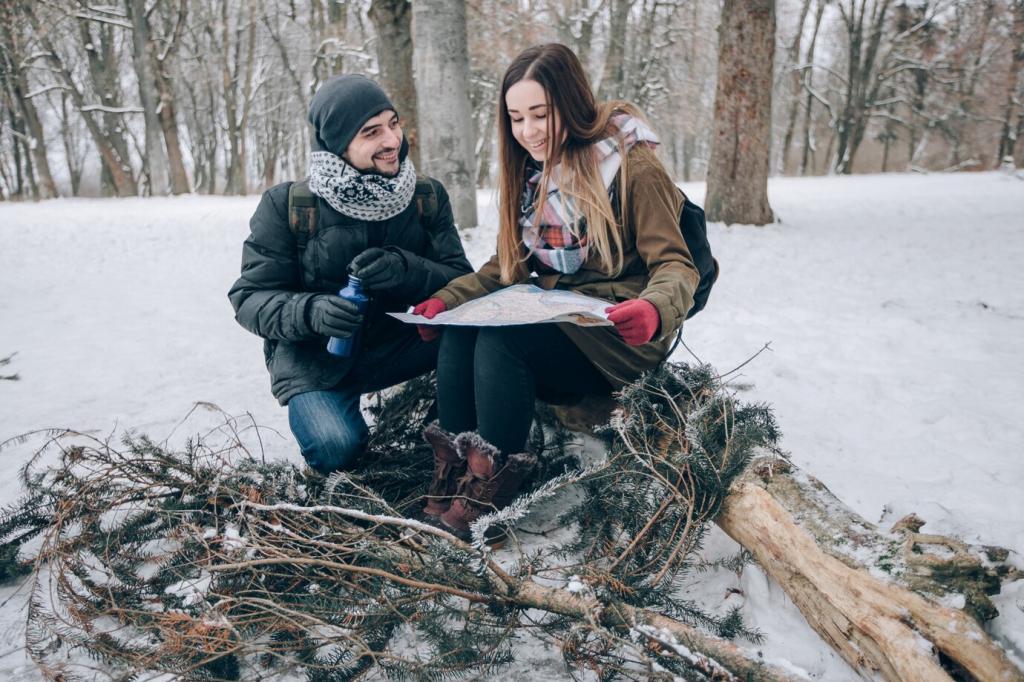Winter Mountain Hiking Gear Must-Haves
Chosen theme: Winter Mountain Hiking Gear Must-Haves. Step into the cold with confidence. From head-to-toe layering to emergency kits and traction, here’s the friendly, field-tested gear guidance you’ll actually use this winter. Subscribe for weekly deep dives and share your go-to essentials with our community.

Base layers that breathe and dry fast
Prioritize merino or high-quality synthetics; skip cotton entirely. A snug fit moves sweat off skin, reducing chills during breaks. Bring a spare top for summit swaps, and tell us which fabric kept you warmest on your coldest hike.
Midlayers: down versus synthetic in stormy mountains
Down is lighter and packs small, but synthetic keeps insulating when damp. If flurries threaten, consider synthetic for safety margins. Carry one active mid for movement and a loftier puffy for stops. What’s your trusted midlayer combo?
Shell armor: waterproof, windproof, and still breathable
A durable hardshell with pit zips blocks spindrift and brutal ridge winds. Look for adjustable hoods and hem drawcords that seal heat. Softshell pants can pair well with a waterproof over-pant. Share your favorite shell that battled sleet and won.

Boots, Socks, and Traction You Can Trust
Insulated boots with dependable grip
Choose waterproof, insulated boots with aggressive lugs and enough stiffness for uneven, crusty snow. Test fit with winter socks, and leave toe room for circulation. If your toes ever went numb on a ridge, tell us what finally solved it.
Sock systems, liners, and gaiters that block spindrift
Wool or synthetic socks wick moisture; thin liners reduce friction. Knee-high gaiters keep powder out and add wind protection. Rotate a dry pair for camp or summit. Which sock combo saved your heels on a long, frozen descent?
Microspikes, crampons, and snowshoes for changing terrain
Microspikes excel on packed trails; crampons bite into steeper, icier slopes. Snowshoes float in deep powder and prevent postholing. Match traction to route and group experience. Comment with your favorite traction system for mixed conditions.
Warmth Management: Hands, Head, and Core
Glove systems: liners, insulated shells, and big mitts
Carry thin liners for dexterity, warm insulated gloves for hiking, and oversized mitts for rest stops. Keep chemical warmers as backups. Practice quick swaps without exposing bare skin. What glove combo kept you smiling at ten below?
Hats, balaclavas, and neck gaiters that actually breathe
A wind-resistant beanie plus a breathable balaclava blocks cheek-stinging gusts without soaking with condensation. Neck gaiters add versatile warmth and sun protection. Adjust coverage during climbs. Share your favorite face protection for whiteouts.
Active insulation and smart venting on the move
Use breathable synthetic insulation while hiking and avoid overshooting your heat budget. Vent early: unzip pits, loosen cuffs, and crack the front zip. Staying dry is staying warm. What’s your venting routine when the trail tilts skyward?
Navigation, Lighting, and Staying Visible
Carry a paper topo and know your bearings; batteries fade in cold. A GPS or phone app adds precision, but stash it warm in an inner pocket. Mark decision points. Tell us your best tip for keeping electronics alive below freezing.
Navigation, Lighting, and Staying Visible
Choose a headlamp with a locking switch and winter-friendly buttons. Lithium batteries outperform alkaline in low temperatures. Bring a spare lamp and stash backup cells close to your body. Which headlamp saved a late descent for you?


Emergency shelter, heat, and fire-starting
A compact bivy, foam sit pad, and stormproof matches create an instant warm zone. Add a lightweight tarp or bothy bag for group shelter. Practice lighting stoves with gloves. What emergency shelter lives permanently in your winter pack?
First aid and field repairs that actually get used
Include blister care, elastic wrap, pain relief, and a few gauze pads. Add tape, zip ties, cord, and a multi-tool for binding busted snowshoe straps. Customize for your group. Share your most clutch field repair from a frozen trail day.
Use wide-mouth bottles upside down in insulated sleeves so ice forms at the top. If using a hose, blow back after every sip and route it inside your jacket. Add warm electrolyte mix. What hydration setup survived your coldest outing?
Hydration, Food, and Stove Systems
Choose chewy bars, nut butters, cookies, and cheese that stay edible when cold. Stash snacks in chest pockets to soften. Plan frequent, small bites during climbs. Share your favorite cold-proof snack that still tastes great on blustery ridges.
Hydration, Food, and Stove Systems



